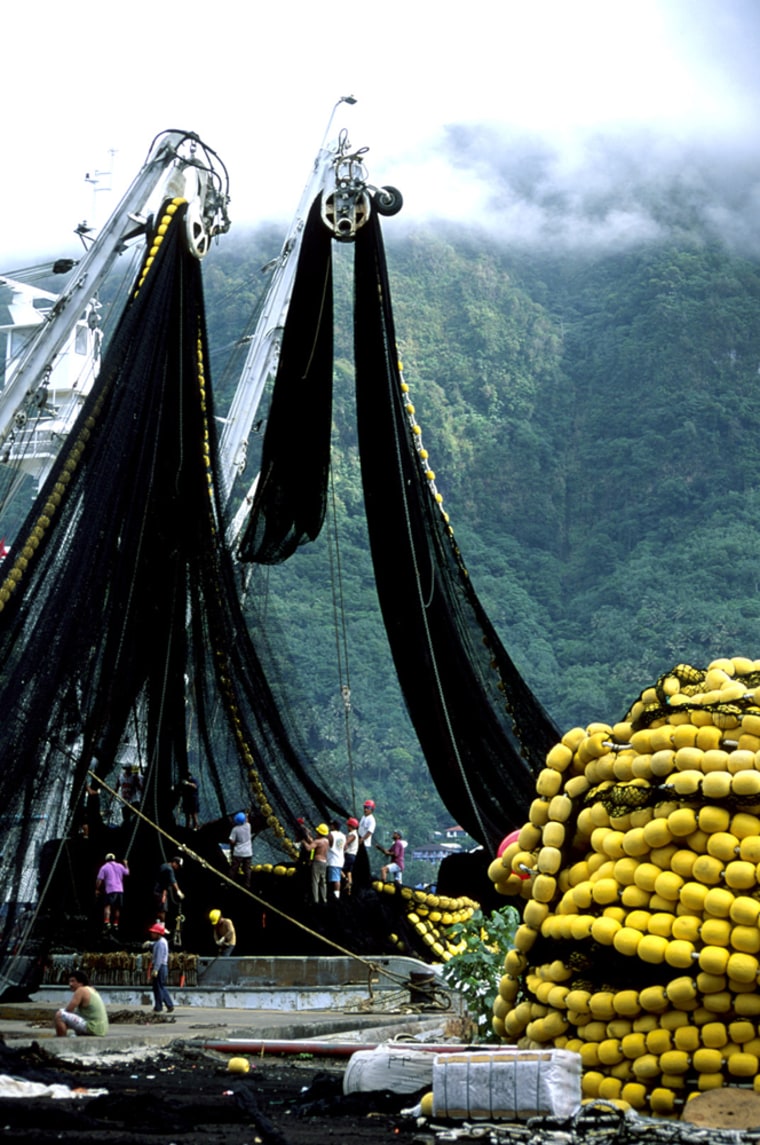Fishermen who rake giant nets across the ocean floor to maximize their catch are destroying unique and unexplored ecological systems, according to a U.N. draft environmental report made public Wednesday.
Just over half of the underwater mountain and coral ecosystems in the world are located beyond national boundaries, leaving them unregulated and vulnerable to the damaging practice known as bottom trawling, the report said.
Trawlers’ nets shatter coral and churn up clouds of sediment that smother sea life, the report said. The worst damage often occurs to underwater mountains, or seamounts, that are home to thousands of species of coral and fish, some still unidentified by scientists, the report said.
Over-exploitation of traditional fish such as cod and hake has prompted fleets to trawl the high seas for deep-dwelling species such as orange roughy, alfonsino and roundnose grenadier, but they are harming biodiversity in vulnerable regions of the Pacific, Atlantic and Indian Oceans.
“There is an urgency, first of all, to deal with regulating those fisheries and secondly to get out there and look at those habitats before they are gone,” said Dr Alex Rogers, of the Zoological Society of London and a co-author of the report.
“Fish hundreds of years old are being decimated as a result of this trawling,” he told a news briefing.
“In the case of deep-sea trawling it is, therefore, essential that the burden of proof shifts to governments and fisheries when deciding whether it is appropriate to exploit these irreplaceable ecosystems,” Rogers added.
U.N. delegates are scheduled to discuss a moratorium on bottom trawling next month in New York.
The General Assembly passed a nonbinding resolution in 2004 urging all nations to consider temporary bans on trawling. Nations whose fleets do much of the world’s trawling, including Spain, Japan and Iceland, oppose a broader moratorium
Spain is biggest bottom trawler
Matthew Gianni, a fisheries expert and author of a report on the impact of trawl fisheries and their impact, told the briefing that 11 countries are responsible for 95 percent of high seas bottom-trawling.
Spain, which has the largest fleet, had about 40 percent of the bottom trawl catch in 2001, followed by Russia with 14 percent, Portugal, Estonia and Norway with 7 percent each.
The bottom-trawl catch in 2001 was valued at $280 million to $320 million, or about 0.5 percent of world marine catch.
Fernando Curceio, director of Spain’s Fisheries Resources Department, called the report alarmist and said it lacked scientific basis. He said the area where Spanish ships trawl in the southwest Atlantic Ocean was just “a platform of sand,” not a vulnerable environment.
“We are not trawling over ecosystems that are in danger,” he said. “We’re not prepared to tell our boats to stop fishing when there’s nothing to protect.”
The Deep Sea Conservation Coalition on Tuesday called opposition within the European Union the most significant obstacle to the moratorium.
“Opposition flies in the face of scientific evidence, public concern and plain common sense,” said the coalition’s Matthew Gianni. “The rest of the world cannot allow itself to be dictated to and its global heritage to be plundered by a few states protecting short-term economic interests.”
Orange roughy and ecosystems
The precise number of large seamounts worldwide is unknown. It is estimated to be around 100,000 but Rogers said scientific information exists on only about 40.
The report used coral records on seamounts and global data sets on environmental factors and computer modelling to plot the potential global distribution of stony corals on seamounts and areas particularly vulnerable to deep sea trawling.
It says more commercial fishing for alfonsino and orange roughy in the central-eastern Southern Indian Ocean, in the South Atlantic and in some regions of the southern-central Pacific Ocean are likely to have a negative impact on seamount ecosystems.
